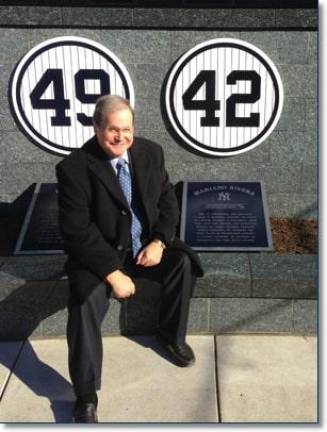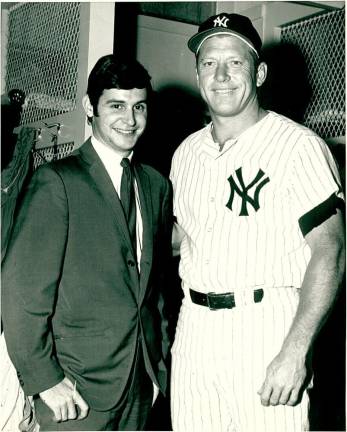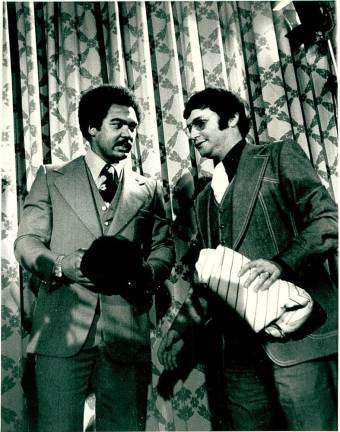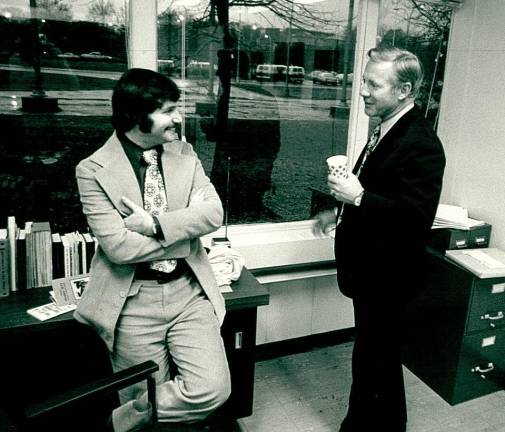Marty Appel Is Still A Diehard’s Diehard Yankee Fan
We talked to the esteemed Yankees historian and PR veteran Marty Appel about what it takes to be a scrupulous and lifelong observer of baseball’s most storied team. He released his latest book, Pinstripes by the Tale, on May 2nd. Unlike some of his past Yankee books, which were years in the making, he said this one took only six months to write.




Marty Appel is the consummate New York Yankees insider. He ran their PR operation in the 1970s after attending SUNY Oneonta, which meant that he played an indispensable role in the forging of a baseball imperium that defines America’s national pastime. He shepherded that experience into the sort of baseball-chronicling career that any historian can only dream of, writing the landmark Yankees saga Pinstripe Empire in 2012. He’s in the New York State Baseball Hall of Fame, won a Gold Record (for spoken word recording), has consulted on shows ranging from HBO’s 61 to ESPN’s The Bronx is Burning, and has even scooped up an Emmy for his work telecasting Yankees games (what else?) at WPIX. We talked to Appel about the most entertaining fan letters Mickey Mantle received, what goes into selecting the best Yankee anecdotes, and what true fandom constitutes.
You’ve written a ton of books about the Yankees, from Pinstripe Empire to your earlier biographies of Yogi Berra and Joe DiMaggio. You got your start as a summer intern answering Mickey Mantle’s fan mail. What were some of the most memorable letters you had to comb through?
The letters that he got were almost form letters, and almost all the same: “Here Mickey, you’re my favorite player, send me an autographed baseball.” I would open 125 of those a day. Occasionally there’d be an invitation to a bar mitzvah, or a request to be a judge at a beauty pageant. Whatever was a little different I managed to save up so I could go over it in person, and have some Mickey Mantle time.
How did you go from there to running the Yankees’ PR empire in the 1970s?
Well, it was the PR department that hired me to do the fan mail, and I made it known that I wanted to do more and was available. So they put me to some extra work on Old-Timers’ Day in 1968 and 1969. I showed them I could write these little mini-bios for the program, and I think they were just impressed that somebody 19 years old had this wealth of Yankee history in his brain. Honestly, in the late 60s, baseball was not a very cool sport. People my age were drifting to football and basketball. So I was kind of a rarity in that sense. They liked that, you know, another generation was looking to move into baseball operations. Then, in 1970, the assistant PR director left and went to another team. So I was offered that position, and I got it. That launched my career as a PR executive there, first as assistant director and then as director. So I was the youngest PR director until this day, I think, to head a major league baseball team.
Your book Pinstripe Empire can almost be described as the definitive modern history of the Yankees. It’s also a sort of coming-of-age story of sorts. You trace the evolution of the team from Hilltop Park to becoming an “international brand.” I know you were kind of instrumental to creating that brand. What goes into making it?
I give a lot of credit to George Steinbrenner on that, something that’s usually not listed when they talk about his pluses and minuses. He had an early sense of the power of the Yankee logo and the power of the Yankee brand. He knew it could be dominant domestically, and he always resented that the teams had to share equally in revenue generated by MLB trademarks and logo merchandise. He also saw it as an international brand. I don’t think I’m going too far as to say when you travel around the world, you see so many people wearing Yankee caps. It’s almost like an alternative to the American flag, and identifies you as culturally or emotionally tied to America. Whatever it was that Steinbrenner envisioned back in the 70s has come to fruition and then some.
Your latest book is Pinstripes by the Tale. It’s structured as a set of insider anecdotes. Is there any tale in there that’s your personal favorite, or that defines the Yankees for you?
Oh, I don’t know if I can define one as a personal favorite. But there is one that’s sort of easy to tell, and says a lot. I had two meetings with Whitey Ford one day. We had to walk eight blocks up Fifth Avenue, on a beautiful sunny day in New York City. Nobody recognized him. Nobody stared, or commented, or anything. As we were approaching our destination, I said: “Isn’t this a little amazing that nobody has recognized you?”, and he said to me: “It’s because I’m walking with you. If I were walking with Mickey Mantle, we’d have had a police escort by now.” So it’s a little bit of a story of me being attached to a great name like his in the course of business. It also gives a little look at Whitey Ford and his New York City wise guy cracks.
What does fandom mean to you? What does being a true Yankees fanatic entail?
Well, firstly, you have to sort of have a feel and then interest in history. That has to be one of your good subjects in school. I was seven when I became a Yankees fan. I always had an eye out for the backstage things that would be of interest to a core of Yankee fans. Why did this guy get this uniform number? How come this guy was traded at the peak of his career? Things like that–which might not necessarily be evident at baseballreference.com–but the stories behind them are of great interest to millions of Yankee fans.
How do you maintain your love for the Yankees outside of writing books or attending games?
There are some days when I think it’s just so ingrained in me after 50 years, that I can’t help myself. There are times like any fan when the team just pisses me off. You know, why did they keep this guy? Why do they keep this guy on the roster? It’s really a habit by age 74, which is what I am now. If the Yankees are on, I’m gonna watch the game. I’m gonna look for things that have sort of a historical resonance to them. The other day, Harrison Bader hit his second triple in two days. Now, last year, the Yankees had eight triples. Maybe it was nine, you’d have to look it up. I think that’s largely because players are now instructed that it’s not worth the risk. To go from second to third, you’re probably going to score from second almost as easily without risking the out. So I’m sort of watching triples now. That Bader would hit two triples in two days was an amazing thing to me.